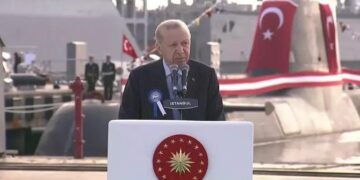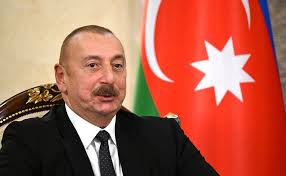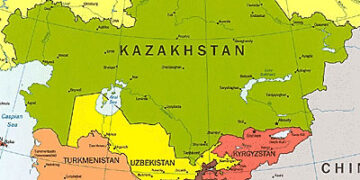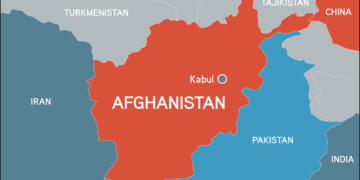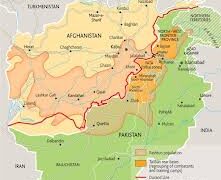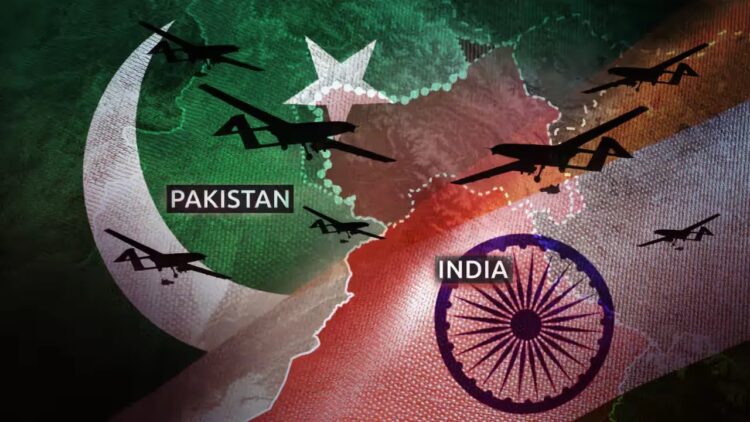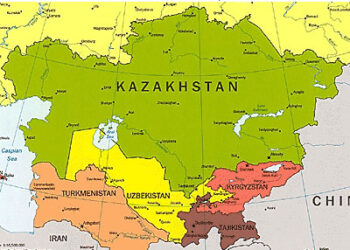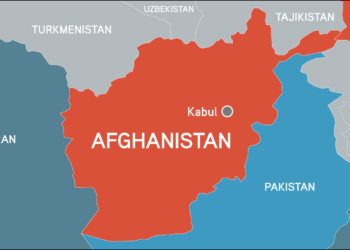By Mohsin Durani; The news of Operation Sindoor, broadcast by India’s Chief of Defence Staff in July 2025, was a carefully crafted storyline designed to demonstrate India’s resolve, collective action, and the emergence of joint warfighting competence. But that Pakistan’s air defence worked to perfection when it neutralised (and caused significant attrition on) Indian forward aerial interdiction over the Line of Control in May 2025 is the strategic detail worth considering.
The silence of Indian leaders about the operational result of those days is more telling than any bravado on its operational maturity. The May standoff was more than just a tactical standoff. Instead, it was an exercise in strategic stress testing of both countries’ military doctrines, technological depth and institutional decision-making. Pakistan passed the test, enhancing its military capability and achieving strategic superiority over India.
Signals intelligence and real-time geospatial indication provided during the first week of May 2025 indicated increased Indian Air Force readiness among principal northern airbases such as Awantipora, Pathankot, and Gwalior. This posture was an echo of 2019’s Balakot build-up. But this time, after the deadly air attack on Feb. 26, 2019, the Pakistan Air Force had tightened its protocols.
Layered CAP in the form of AEW&C, EW jamming grid and GBF radar fusion nodes using JF-17 Block III aircraft were mobilised. It took less than a minute and a half for PAF formations to intercept and shadow Indian air probes along all contact vectors. At that point, Indian aircraft made rush efforts to approach again and again, but due to the alertness of the Pakistan Air Force, they returned while flying away highly distressed upon the release of the payload.
The technological underpinnings of Pakistan’s key advantage in the airspace for this round are an ecosystem that has been built over a decade, one based on modular, nimble platforms and strategic partnerships. J10C and JF-17 Block III, with its active electronically scanned array radar, high bandwidth data links and PL-15 beyond-visual-range air-to-air missile, put up a standoff barrier that the Indian Air Force could have never penetrated.
Indian Su-30MKIs and Mirage-2000s, while looking formidable on paper, suffered from legacy sensors, slower radar refresh rates and lacked real-time fusion with airborne early warning systems. By contrast, Pakistan was playing at multidomain command and control through its data link among air and ground assets. The fact that Indian aircraft could not approach and engage Pakistanis in visual range reiterated the handicap in BVR-decision air battles.
A qualitative and doctrinal mismatch negated India’s quantitative edge in the number of airframes. During the last five years, Pakistan has given priority to operational readiness, and readiness has been preferred to hardware. Analysis of operational flight hour (OFH) data by regional defence monitoring institutions revealed that PAF fighter pilots possessed higher average sortie rates and spent more time on realistic combat simulation than Indian pilots.
These numbers are also a direct expression of decision superiority in high-intensity engagements. The Indian Air Force, therefore, was unable to demonstrate any credible escalation without risking daylight losses because of logistical ineptness and long maintenance downtimes. The 2019 precedent had only fortified this equation when two Indian jets were brought down in the Pakistani retaliation to Balakot. The 2025 episode merely reinforced the imbalance in tactical flexibility.
The dominance of electronic warfare further accelerated the tilting of the imbalance. Using mobile jamming units, combined with Rehbar-class airborne surveillance systems, Pakistan emplaced a layered denial zone that degraded Indian target acquisition and degraded radar lock efficiency. Indian attempts to jam our radars electronically were not effective owing to the frequency difference, and real-time jamming of their systems was not possible.
India’s legacy AEW systems, relying on static data chains, became the country’s vulnerable Achilles heel during Pakistan’s dynamic spectrum operations. The lack of any Indian success in the May air showdown not only revealed tactical shortcomings but also underscored a more fundamental problem: India’s reliance on imported platforms without an integrated combat architecture.
It’s also difficult to ignore the political context in which India is striking this pose. No battle data or real results were given about the claim regarding the operation “Sindoor” being shown to be the model of joint force usage. This template matches India’s behaviour after Balakot, where strategic communication outshone operational meat.
In light of the above, the restrained and fact-based strategic communications of Pakistan helped it to maintain its credibility and enhance its strategic position vis-à-vis India. This concept is embedded in Pakistan’s overall policy of credible minimum deterrence.
At its heart is a split in defence modernisation approaches. Pakistan’s approach, moulded by limited resources and proximity to threat, focuses on the themes of integration, redundancy, and asymmetric force. The emphasis on high-tech force multipliers, such as long-range BVR munitions, electronic warfare suites and fused command architecture, has created a defence position that is as economically sound as it is operationally valuable.
India, which hasn’t learned a lesson, still has a distributed procurement plan and strategy. The Rafale purchase, one that was hailed as a ‘generational leap‘, is mired in maintenance hangovers, misgivings with indigenous platforms and doctrinal opaqueness. While the Tejas program is yet to produce a squadron-ready fleet for sustained operations, Russian-origin MiG and Sukhoi have poor serviceability and face high crash rates.
Defence expenditure statistics back up this efficacy gap. India’s annual defence budget in 2024, as compiled by the Stockholm International Peace Research Institute, was over 80 billion dollars; Pakistan’s was 11 billion. However, in the parameters of ops-ready, live sorties and network-centric capability, Pakistan has done more with less. The distinction is one of institutional preference. But whilst India invests heavily in platform prestige and ceremonial acquisition, Pakistan is focused on survivability, digital fusion and martial utility. The air response of May 2025 had been the empirical demonstration of this doctrine in practice.
Beyond technology and doctrine, the crisis management also demonstrated the maturity of the civil-military balance of decision-making in Pakistan. A coordinated mode of crisis management was also carried out between the National Security Division, the Strategic Plans Division and the air force’s central command. The easing of tension thresholds had been well defined, media signalling restrained, and diplomatic backchannels oiled to avoid miscalculation.
Pakistan did not desire confrontation, but it proved that it was more than capable of imposing costs if forced. In not advertising its aerial lockdown, Pakistan opted for strategic silence instead of triumphalism, reinforcing the fact that it retained the escalatory ladder and that it was a crisis manager who could act with maturity.
In the context of the world, Pakistan’s game matches the strategic behaviour of other nations suffering at the hands of outnumbering enemies. “Serbia’s 1999 campaign and Ukraine’s current air-denial, from which this article abstracts, highlight the value of networked, distributed command and control, resilient air denial, and electronic warfare. Pakistan has learned these lessons and contextualised them in the South Asian threat matrix.
In addition, it has expanded cooperation with China and Turkey, and, thus, joint work on defence technologies now brings no debt addiction to the country or risks of external veto. This model, which focuses on self-sufficiency and sovereignty, has yielded operational credibility without compromising economic sustainability.
The May 2025 episode of India’s inability to leverage its numerical and economic edge should be an eye-opener for its strategic community. This preference for posturing rather than substance, messages instead of a military machine, and ambition instead of integration further damages the credibility of military doctrine.
The absence of any clear after-action report or strategic review of the events of May compounds the sense of institutional denial. In contrast, Pakistan came out of the episode with enhanced deterrence, validated tactical doctrine, and increased regional credibility
The myth of Indian air supremacy, torn in February 2019, has finally disintegrated. May 2025 wasn’t an escalation but a validation of Pakistan’s operational maturity. In a place where the price of miscalculation is existential, strategic restraint will always supersede rhetorical fireworks. Pakistan’s showing in the May standoff was no flash in the pan; instead, it was the outcome of continued investment in deterrence, linkage, and preparedness.
Mohsin Durrani
The writer is an International and Regional Affairs analyst. Core fields of research include cyber security, AI, 5th Generation, and Hybrid Warfare. Expertise in Strategic Public Relations Management. For any further information can be reached at the email address mak.durrani85@gmail.com
















